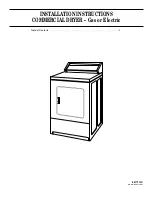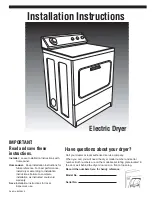
Weaving Instructions
Rug Loom User’s Manual
Page | 94
Warping The Sectional Beam
the Rear (stationary) Reed. Since this reed is eight dents per inch, you will
divide the E.P.I. into eight to find out how many ends will be in each dent
(with sixteen E.P.I, put two ends in a section). If your E.P.I. does not divide
equally by eight, you can either vary the number of ends in each dent (with
twenty E.P.I., alternate two and three ends in the dents) or thread the dents
a little wider than two inches (with twenty E.P.I., put two ends in each dent;
with forty ends, the reed will be sleyed 2-1/2” wide).
Next, bring the thread straight through the Tension Peg section, between the
larger adjustable Tension Pegs and the smaller, stationary Pegs or just
above the smaller stationary Pegs if you have removed the larger ones.
Thread the first end through one heddle on the Front Harnesses, nearest to
the back plate. The next end will go through the first heddle on the rear
Harness. Repeat this, alternating harnesses for the rest of the ends. The
heddle system will be used later to create the Threading Cross.
Now thread the end through the front Pivoting Reed. Here you have a choice
of using an eight dent or ten dent reed. Pick the one that can be sleyed
evenly and as close to the desired section width as possible. If you cannot
get the exact width of the section, sley your reed slightly wider. This will
make it just slightly wider than the space between the hoops. The section
will be narrowed down by pivoting the Reed. Never sley the reed narrower
than the section on the Beam because it is critical that the ends wind on
evenly across the width of each section. If the ends are set too narrow at the
Pivoting Reed, there is no way to expand it.
After the Tension Box is completely threaded, move the larger Pegs
downward and tighten their wing nuts securely, to apply tension to the
yarns. The further down the Pegs are moved, the more tension will be
applied to the yarn. This is an adjustable system as different yarns require
more or less tension. With a heavy wool, the Pegs may only need to be
moved half-way down, whereas with a fine silk, the Pegs may need to be
moved all the way down and the yarn wrapped an extra time around one of
the stationary Pegs to get the proper tension. Once you have adjusted the
tension correctly, do not change it during the winding of the Beam, as long
as you are using the same type of yarn.
Once the Tension Box has been threaded, it is not always necessary to
rethread it. If you need to change spools or cones, simply tie the new ends
on to the old ends just before the rear stationary reed and pull gently on the
old ends until the new ends have come all the way through the box.
Содержание Rug Loom
Страница 2: ......
Страница 5: ...Rug Loom User s Manual Introductory Information Page 1 INTRODUCTORY INFORMATION ...
Страница 14: ......
Страница 15: ...Rug Loom User s Manual Loom Assembly Set Up Page 11 LOOM ASSEMBLY ...
Страница 20: ...Loom Assembly Page 16 Figure 2 Left side frame completed completed Rug Loom User s Manual Side Frame Assembly ...
Страница 57: ...Rug Loom User s Manual Install the Air Lift Figure Figure 38 Mechanical dobby side Loom Assembly Page 53 ...
Страница 64: ......
Страница 65: ...Rug Loom User s Manual Appendix Optional Features Other Loom Maintenance Page 61 APPENDIX OPTIONAL FEATURES ...
Страница 84: ......
Страница 115: ...Rug Loom User s Manual The Fine Print Removing Cloth from the Loom Page 111 THE FINE PRINT ...
















































